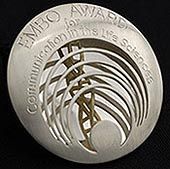Reprogramming Human Cells Without Inserting Genes
Research Team at WPI and CellThera Discovers a Way toTurn on Stem Cell Genes in Human Skin Cells Without Using Viruses or Inserting New Genes
A research team comprised of faculty at Worcester Polytechnic Institute's (WPI) Life Sciences and Bioengineering Center (LSBC) and investigators at CellThera, a private company also located at the LSBC, has discovered a novel way to turn on stem cell genes in human fibroblasts (skin cells) without the risks associated with inserting extra genes or using viruses. This discovery opens a new avenue for reprogramming cells that could eventually lead to treatments for a range of human diseases and traumatic injuries by coaxing a patient's own cells to repair and regenerate the damaged tissues.
The research team reported its findings in the paper "Induction of Stem Cell Gene Expression in Adult Human Fibroblasts without Transgenes," published in Cloning and Stem Cells. "We show that by manipulating culture conditions alone, we can achieve changes in fibroblasts that would be beneficial in development of patient-specific cell therapy approaches," the authors wrote in the paper.
Early on, the emerging field of regenerative medicine focused on embryonic stem cells, which are pluripotent, meaning they can grow into all the tissues of an adult organism. In the pluripotent state, several genes are known to be active, helping to control the stem cells. These genes, including OCT4, SOX2 and NANOG, are accepted as markers of pluripotency because they are active in stem cells, but become dormant once the stem cells begin to differentiate and head down the path to developing into a specific kind of cell type and tissue.
While the study of embryonic stem cells continues to yield important knowledge, research teams around the world are also working to change, or reprogram, fully-differentiated cells like skin cells, back to a more pluripotent state. Called induced pluripotent stem cells (iPS), these reprogrammed cells could be used to regenerate tissue without some of the problems associated with embryonic stem cells, including ethical questions and the potential for embryonic stem cells to be rejected by a patient's immune system or to grow out of control and cause tumors.
In the current study, the team at WPI and CellThera turned on the existing, yet dormant, stem cell genes OCT4, SOX2 and NANOG already in the skin cells by lowering the amount of atmospheric oxygen the cells were exposed to, and by adding a protein called fibroblast growth factor 2 (FGF2) to the culture medium. (FGF2 is a naturally occurring protein that is known to be vital for maintaining the pluripotency of embryonic stem cells.)
Furthermore, once the stem cell genes were activated and began expressing proteins, the team found those proteins migrated back into the nucleus of the skin cells, precisely as would occur in induced pluripotent stem cells. "This was an exciting observation," said Raymond Page, PhD, research assistant professor of biology and biotechnology at WPI and lead author on the paper. "Having these proteins localize to the nucleus is the first step of reprogramming these cells."
Even more surprising, the team found that the stem cell genes OCT4, SOX2 and NANOG were not completely dormant in untreated skins cells, as was presumed. Those genes were, in fact, sending out messages, but those messages were not being translated into the proteins that do the work of making cells pluripotent. "This was quite unexpected," said Tanja Dominko, DVM, PhD, associate professor of biology and biotechnology at WPI and president of CellThera. "Not only does this data force us to rethink what the true markers of pluripotency may be, it suggests there is a natural mechanism at work in these cells regulating the stem cell gene expression. That opens a whole new line of inquiry."
Most read news
Topics
Organizations
Other news from the department science

Get the life science industry in your inbox
By submitting this form you agree that LUMITOS AG will send you the newsletter(s) selected above by email. Your data will not be passed on to third parties. Your data will be stored and processed in accordance with our data protection regulations. LUMITOS may contact you by email for the purpose of advertising or market and opinion surveys. You can revoke your consent at any time without giving reasons to LUMITOS AG, Ernst-Augustin-Str. 2, 12489 Berlin, Germany or by e-mail at revoke@lumitos.com with effect for the future. In addition, each email contains a link to unsubscribe from the corresponding newsletter.





















































